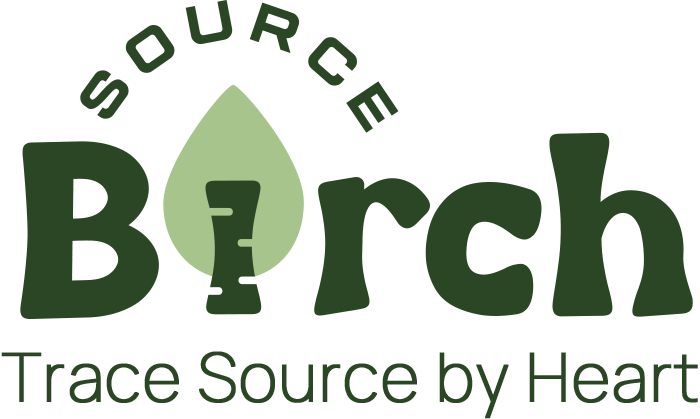Birch Sap: Unlocking the Ancient Nordic Secret for Health, Wellness, and Sustainable Growth
Birch Sap: Unlocking the Ancient Nordic Secret for Health, Wellness, and Sustainable Growth

For centuries, across the frosty landscapes of Northern Europe, Russia, and parts of Asia, a precious resource has flowed from the veins of birch trees each spring: birch sap. Revered as a revitalizing tonic by indigenous cultures, this clear, slightly sweet liquid is now gaining global recognition for its remarkable health benefits and diverse applications. As consumers increasingly gravitate towards natural, organic, and sustainably sourced products, birch sap stands out as a genuine superfood, aligning perfectly with modern wellness and environmental values.
Early Spring Elixir: What is Birch Sap?
Birch sap, often referred to as birch water, is the natural fluid that circulates within birch trees (genus Betula) during a brief period in early spring, typically just before the leaves emerge . This xylem sap carries nutrients from the tree's roots to its developing buds, preparing the tree for a new season of growth . It's a natural solution packed with essential compounds that awaken the tree after winter dormancy . Its unique taste can vary slightly depending on location, sunlight, and soil, ranging from subtly sweet to a hint of mineral freshness .
A Tapestry of History and Tradition
The practice of collecting birch sap is deeply rooted in the folklore and traditions of many cultures, particularly in Scandinavia, Eastern Europe, and Russia . Historically, it served as a vital spring tonic, believed to cleanse the body and replenish essential nutrients after long, harsh winters . Folk uses documented across various regions include medicinal applications, supplementary nutrition, and cosmetic treatments for skin and hair . Its use dates back centuries, with mentions in historical texts highlighting its importance as a spring drink .
The Nutrient-Dense Profile of Birch Sap
Far from simple water, birch sap is a complex natural beverage brimming with bioactive compounds. Its composition includes a variety of vitamins, minerals, amino acids, antioxidants, and natural sugars .
| Nutrient Category | Specific Components | Potential Benefits |
|---|---|---|
| Vitamins | Vitamin C, B vitamins (B2, B3, B5, B6, B8, B9, B12), A, D3, E, K1 | Energy, immunity, cell protection, skin health |
| Minerals & Trace Elements | Magnesium, Potassium, Calcium, Silicon, Manganese, Zinc, Selenium, Phosphorus, Lithium | Bone health, muscle function, hydration, antioxidant support, detoxification |
| Amino Acids | Asparagine, Glutamine, Arginine, Serine, Glycine | Protein building blocks, energy, immunity, skin health |
| Antioxidants | Polyphenols, Flavonoids, Fruit Acids (like citric acid) | Combat free radicals, anti-aging, cell protection |
| Natural Sugars | Fructose, Glucose, Sucrose | Mild sweetness, natural energy |
The exact composition can vary slightly based on the birch species, geographical location, and harvesting time within the spring season .
Unveiling the Health Benefits
The rich nutritional content of birch sap translates into a wide array of health advantages, making it a compelling addition to a wellness routine:
1. Natural Detoxification and Drainage
One of the most recognized benefits of birch sap is its ability to detoxify and purify the body . It acts as a natural diuretic, supporting the kidneys, liver, lungs, and skin in eliminating accumulated toxins and metabolic waste like uric acid and urea . This purifying effect is particularly valued after winter, helping the body to refresh and re-energize .
2. Superior Hydration and Remineralization
Given its high water content and abundant minerals, birch sap is an excellent hydrator that also re-mineralizes the body . It provides electrolytes in an easily absorbed form, helping to restore mineral balance and prevent deficiencies, which is especially beneficial for athletes or individuals seeking natural replenishment .
3. Anti-Inflammatory and Analgesic Properties
Birch sap contains unique compounds called heterosides, such as betuloside and monotropitoside, which release salicylic acid (similar to aspirin) . This gives birch sap natural anti-inflammatory and pain-relieving effects, potentially offering relief for conditions like joint pain, rheumatism, and even hangovers .
4. Boosting Immunity and Vitality
The presence of vitamins (especially Vitamin C and B vitamins), amino acids, and minerals like magnesium helps to invigorate the body and strengthen the immune system . Regularly consuming birch sap can help combat fatigue, stress, and provide a natural energy boost, especially after the winter months .
5. Skin and Hair Rejuvenation
Birch sap has been used cosmetically for millennia and is increasingly found in beauty products . Its amino acids, vitamins, and minerals provide moisturizing, nourishing, and protective effects for both skin and hair . It can improve skin texture, reduce redness and inflammation (beneficial for conditions like acne and rosacea), stimulate cell renewal, and help balance moisture .
6. Digestive Support
Compounds in birch sap may play a role in supporting digestion and metabolism, potentially aiding in weight control and overall gut health . Its gentle cleansing action can also contribute to a healthier digestive system.
7. Enhancing Sleep Quality
Emerging research and traditional knowledge suggest birch sap can promote restful sleep . Minerals like magnesium and potassium help relax muscles and regulate the nervous system, reducing stress and anxiety that interfere with sleep . It may even influence the regulation of sleep hormones like melatonin .
Sustainable Harvesting: Tapping the Source Responsibly
Birch sap harvesting is a fleeting, seasonal window, typically occurring in early spring just before the buds open . This period ensures the highest quality sap and minimizes impact on the tree. Sustainable practices are crucial to ensure the long-term health of birch forests:
- Timing is Key: Sap flows best when daytime temperatures are above freezing and nighttime temperatures are below freezing . Tapping too early can yield little sap, and too late can result in a bitter taste .
- Proper Tapping Techniques: Small holes (around 1.5-2 inches deep) are drilled at a slight upward angle into a healthy, mature tree trunk, often 3-4 feet from the base . Spiles are inserted to direct the sap into collection containers . Alternative, less invasive methods involve snipping a small branch and securing a bottle .
- Tree Health and Recovery: Only healthy trees should be tapped . After collection, it's vital to seal the holes with a wooden plug or a small branch to prevent infection and allow the tree to heal . Tapping locations should be rotated annually, and trees allowed recovery periods to ensure sustainable yield .
Harvesting birch sap, when done correctly, does not harm the tree .
Modern Applications and Market Growth
The birch sap market is experiencing significant growth, driven by increasing consumer demand for natural, organic, and functional products . Valued at approximately USD 69.3 billion in 2023, the global birch sap market is projected to grow at a CAGR of 12.6% from 2024 to 2032, potentially reaching USD 200 billion by 2032 .
Beyond traditional consumption as a refreshing drink, birch sap is now a sought-after ingredient in various industries:
- Beverage Industry: Used in mixed drinks, functional beverages, flavored waters, and natural thirst quenchers . It can also be fermented into birch beer, wine, or vinegar .
- Food Industry: Utilized as a natural sweetener (birch syrup) and flavoring agent due to its unique profile . Birch sap can even be used in sourdough starters or to make coffee .
- Cosmetic and Personal Care: Its moisturizing, nourishing, and regenerative properties make it a popular ingredient in skincare products, hair care products, and anti-aging formulations .
- Nutraceuticals and Dietary Supplements: Its rich vitamin, mineral, and antioxidant content makes it ideal for health supplements .
Online retail platforms are playing a crucial role in expanding birch sap's reach, offering convenient access to a wide range of products . This market expansion is not just about health benefits but also about the product's eco-friendly and renewable nature, appealing to sustainability-conscious consumers .
Birch Sap vs. Maple Sap: A Comparison
While both birch and maple trees produce valuable sap, they differ in flavor profile, sugar content, and traditional uses. Birch sap has a more complex flavor often described as slightly sweet with a delicate zing or molasses-like notes when concentrated into syrup, whereas maple syrup is renowned for its distinct, richer sweetness . Birch sap has a much lower sugar content than maple sap, requiring over 100 gallons of birch sap to produce one gallon of syrup, compared to about 40 gallons for maple syrup . This lower sugar content contributes to its appeal as a light, refreshing beverage.
Considerations and Best Practices
While generally safe, fresh birch sap is highly perishable and requires refrigeration, typically stable for only about 7 days . Freezing or preservation techniques can extend its shelf life . Always ensure birch sap products are sourced from reputable suppliers to guarantee purity and quality.
For those interested in harvesting, ensure you have permission if not on private property and educate yourself on ethical tapping methods to preserve tree health . Always seal the tap holes properly after collection to prevent infection .
Conclusion: The Future of This Ancient Elixir
Birch sap is more than just a traditional drink; it is a versatile natural resource with significant potential for health and economic growth. Its comprehensive nutritional profile, diverse health benefits, and applicability across various industries make it a key player in the burgeoning market for natural and sustainable products.
As awareness of its remarkable properties continues to grow, birch sap is set to transition from a niche Nordic secret to a globally recognized ingredient in holistic wellness and sustainable consumption. Its journey reflects a broader consumer shift towards products that are both good for the body and kind to the planet.
